An introduction to the most complete breed of cats in history!
Dec 02, 2021
There are 42 breeds of purebred cats recognized by CFA (Cat Fanciers’ Association).
TICA (The International Cat Association) currently recognizes a total of 71 varieties.
When selecting varieties,
You can browse and query information on the website,
In addition to appearance characteristics,
Different breeds of cats differ in behavior and susceptibility to diseases.
Here we have described in detail the 10 most common purebred cat breeds in daily life,
In the table at the end of the article, the behavioral characteristics and character descriptions of 42 cats recognized by CFA are listed.
1. American shorthair cat

History:
The American Shorthair was recognized in 1906. They were originally named "Domestic Shorthair". They came to the North American continent with European immigrants on the Mayflower ship to catch mice in the cabin. They are functional cats that evolved from nature. Under the long-term optimization of human breeding, stable varieties have been bred.
Physiological characteristics:
The weight of male cats is about 5-7 kg, and the weight of female cats is about 3-5.5 kg. American shorthair cats do not stop growing until they are 3 or 4 years old, and their life span is about 15 years. Not as "stocky" as the British shorthair cat.
The eyes are widely spaced, the upper eyelid is shaped like half an almond, and the lower eyelid has a semicircular curve. The eyes are not as round as the exotic shorthair cat (Garfield, see below), and they are slightly raised. The snout is short and has a strong chin, so the whole face is a bit square. The ears are medium in size, with rounded ear tips, and the distance between the ear tips is about twice the distance between the eyes.
American shorthair cats have harder hair. The most classic colors are silver tabby stripes and brown tabby stripes.
Character characteristics:
American shorthair cats are kind and easy-going by nature and are very popular in the family. They tolerate children and can be very calm and calm. Female cats tend to be more likely than male cats, and male cats tend to be more easy-going. On the whole, they are very smart and very interested in surrounding things. Many American shorthair cats hunt insects that invade their homes. They also like to look at the birds and other living creatures outside from the windowsill. They love people's company, but they also need their own independent space. Some shorts prefer to lie on people's laps, and some tend to curl up near people.
2. British shorthair cat
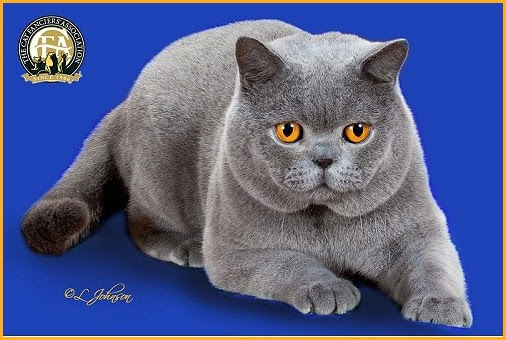
History:
British shorthair cats may be the oldest British breed cats, and their ancestors can be traced back to domestic cats in Roman times. They were previously known for their strength and hunting ability. British shorthair cats were originally street stray cats in the UK, but under the constant selection of breeders, a stable breed has been formed.
Physiological characteristics:
If one word is used to describe a British shorthair cat, it must be "sturdy." Male cats weigh about 4-8 kg, and female cats weigh about 3-5.5 kg. British shorthair cats do not stop growing until they are 3 years old, and their life span is about 15 years.
British shorthair cats have short, dense coats and a velvety feel. They have round heads, short noses, full cheeks, and prominent round beard pads. The eyes are big and round.
Blue is the most classic color of British shorthair cats. Because of its unusual popularity, blue British shorthair cats are also called "blue cats".
Character characteristics:
British shorthair cats are very common. They are friendly, friendly, and not very clingy, but they also enjoy people's care and love. They are loyal but don't like to stay on people's laps. They prefer to squeeze next to you on the sofa. People call them "cats with all four feet on the ground." They are relatively quiet, do not run and jump around, and tolerate children and dogs. They don't like being hugged.
3. Exotic Shorthair (Garfield)
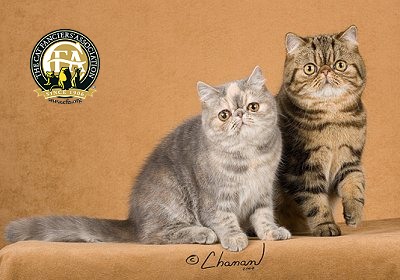
History:
Exotic shorthair cats are actually the result of "unintentionally cutting willows". Breeders of American shorthair cats bred American shorthair cats with Persian cats. They wanted to obtain silver coats and green eyes, but the results were not satisfactory. But this new breed looks very cute, and breeders suggested that they become a new breed called "sterling" (meaning silver). They look very similar to Persian cats but have a short, dense coat. At first, only silver was accepted in the competition, but later all other colors were recognized and the name was changed to "Exotic Shorthair". After that, the breeders used different breeds, such as Maine Coon cats, Russian blue cats, etc., to breed with Persian cats to obtain exotic shorthair cats with different coat colors.
Physiological characteristics:
Exotic shorthair cats are medium-sized cats with large, round and flat faces, lower ears, large and round eyes, and a short nose. They have inherited the head defects of Persian cats, such as tear ducts that are prone to overflow, The nostrils are too narrow, and tooth problems. They are short, strong, and square, with short and thick legs and tails. Exotic shorthair cats are the most "rounded" of all shorthair cat species.
Exotic shorthair cats are not short in fact, they are closer to medium length, are easier to shed, and require a certain degree of hair grooming.
Character characteristics:
Exotic shorthair cats are friendly, docile, and have quiet qualities similar to Persian cats. They will get your attention with eyes that you can't refuse. Their shorthair ancestors made them love to play. They have a very soft voice and can live in harmony with children and other pets. They are afraid of unfamiliar people and show low love for humans.
4. Persian cat

History:
Persian cats are named after their country of origin-Persia, but there are also archaeological studies that have pushed the historical origin of this breed of cats to more than 1600 BC. The Persian cat is the first breed to appear in the cat show. Since the record, the Persian cat has been one of the most favorite cat breeds of mankind. Queen Victoria, who pioneered the Victorian era, is said to have two blue-eyed Persian cats. The size and character of Persian cats determine their noble temperament.
Physiological characteristics:
Persian cats are medium to large cat breeds. They are short and square, with short legs, round heads, and stubby tails. The eyes are big and round, like copper coins. The ears are small, round ear tips, and low in position. The nose is short, upturned, and there is a clear depression between the nose and forehead.
Persian cat's hair is very long, can grow to 15 cm, it looks graceful and luxurious. The head is surrounded by a circle of thick neck hair. The neck is stubby. The hair runs along the body and touches the ground like running water. The tail is like a thick feather. Duster.
Persian cat's hair is easier to knot and needs daily grooming. They also shed tears easily and require daily scrubs.
Character characteristics:
Persian cats are sweet and gentle. They like a stable environment and are treated with gentleness. They don't like to move, play, and are quiet. They mainly rely on their big eyes to communicate. They don't need too much attention from people, can be alone at home, and are less courageous.
5. Ragdoll cat
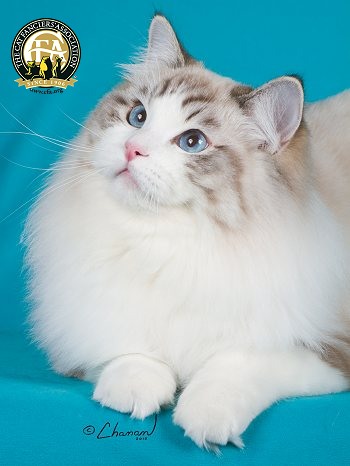
History:
Ragdoll cats were first bred by Ann Baker in the 1960s. The ancestors of puppet cats are almost all stray cats. Ann bred a white long-haired female cat she adopted with her other adopted cats. The offspring of this female cat had an unusually quiet personality. When she hugged them, some of them were as loose as puppets. Hanging on her arm. She invented the breed of puppets after screening the appearance of her coat color and other appearances.
Physiological characteristics:
Ragdolls are large, lazy, and have medium-length hair. Male cats can weigh up to 7-10 kg, and female cats can weigh up to 4.5-7 kg. Male cats can be more than 1 meter long (including tail).
The puppet cat has attractive, slightly raised blue eyes. The head is an equilateral triangle, the ears are of medium size, the two ears are far apart, and the ears are pointed and leaning forward. The nose is of medium length.
The puppet cat is a breed of key color (key color-the color of the body is lighter than the color of the key position (face, legs, tail, ears)), divided into three breeds: colorpoint (colorpoint), bicolor (two-color) And mitted (wear gloves-only the feet on the legs are white). Each species has a seal, blue, chocolate, light purple, laurel, fawn, red, cream, and can also be accompanied by tortoiseshell, lynx, or tabby markings.
Ragdolls are considered late-maturing breeds, generally 3 years old at the earliest, and 4-5 years old at the latest to be considered fully developed.
characteristics:
The puppet cat is relaxed and happy, just like a child's doll. They are friendly, quiet, and seem relatively lazy. They are not very active, and they don't like to bark too much. Ragdolls are known for their endurance. They can bear to put on clothes and be held and walk around without resisting. Because of their friendliness and intelligence, they are often compared with dogs.
6. Scottish Fold Cat
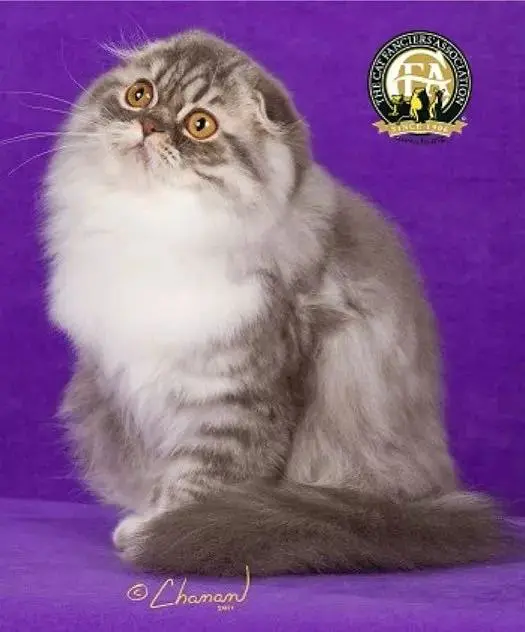
History:
In 1961, a shepherd named William Ross discovered a cat with folded ears on a farm in Scotland. He asked the farm owner to bring a kitten Susie and bred it as a fold-eared cat. . At present, the ancestor of almost all Scottish fold cats is Susie.
Physiological characteristics:
The Scottish Fold is a medium-sized cat. The most unique feature is their fold-down ears, close to the head. Scottish Fold cats are born with straight ears, and there is a certain probability (50%) that their ears will fold at 3-4 weeks. This feature of fold ears is due to an incomplete gene expression.
The Scottish Fold cat has a large round face and eyes, and around the body.
Scottish fold cats come in various colors and characteristics, including traditional colors/point colors, long hair/short hair, and eyes have various colors, but copper color is the most common.
Scottish fold cats may have skeletal defects that affect their athletic ability. Their hearing is not as good as that of ordinary cats, and they are more susceptible to ear mites.
Character characteristics:
The Scottish Fold is smart, curious, and loyal to the family. They are bold and like to follow people around. Many Scottish fold cats stand up and observe like groundhogs. They get along well with children.
7. Siamese cat
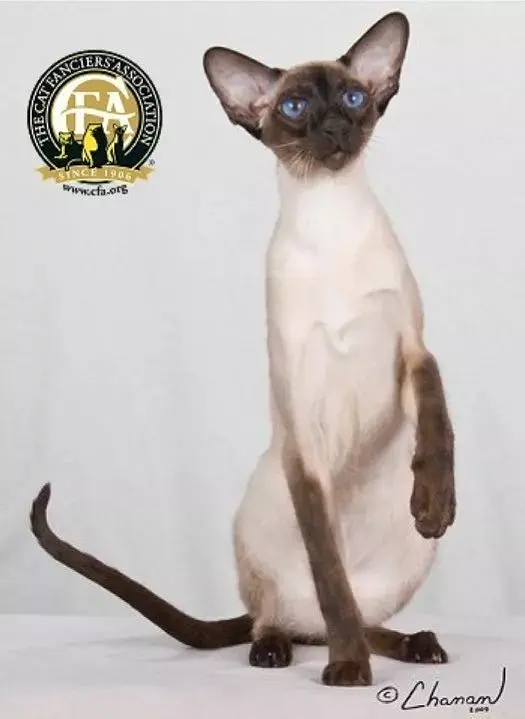
History:
The earliest record of a Siamese cat is a manuscript in 1350, which describes a cat with a white body and black face, tail, feet, and ears. Siamese cats were exported from Thailand to the rest of the world in the late 19th century when Thailand was called Siam.
Physiological characteristics:
The Siamese cat has a long tubular body, long legs, and a fine-pointed tail. The face is long and triangular with large triangular ears. The eyes of Siamese cats are very characteristic, almond-shaped, dark blue, and inclined upward. They have long, straight noses.
The hair of Siamese cats is short, shiny, smooth, and close to the body.
Siamese cats were initially the only seal color, and then blue, chocolate, and light purple were also accepted in the competition. In the 1970s, tabby, red, and cream spotted Siam appeared. Around the 1990s, silver tabby and smoky spots appeared.
Character characteristics:
Siamese cats are very good pets for owners who need a lot of interaction and activities. They get along well with other pets and children. They are friendly, loyal, sticky, and need people's attention very much. They like to play and bark very much, and it takes a lot of time and energy to take care of them.
8. Sphinx cat
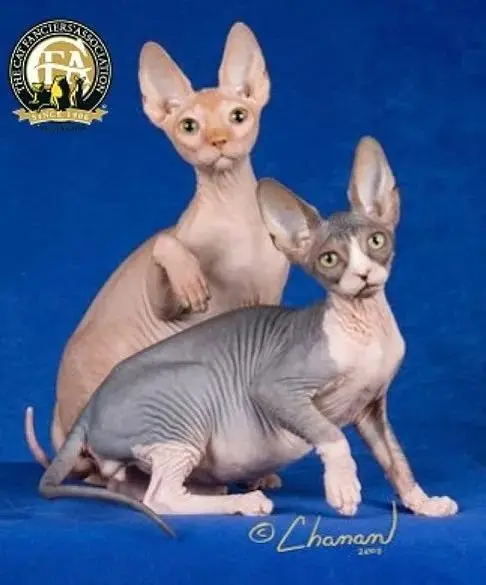
History:
Humans began breeding Sphynx cats in 1966. In Canada, a breeder discovered that a black and white cat gave birth to a hairless kitten. This kitten was used to breed with other cats, and the hairless recessive gene was bred into a new breed. Because it is very similar to the ancient Egyptian sphinx statue, people call this cat "Sphynx cat".
Physiological characteristics:
The Sphinx is one of several hairless cats. The appearance is very characteristic. Their skin has a goatskin-like texture. A small amount of hair can be seen on the back of the nose and ears. They have huge ears, which tend to be 5-8 cm tall. Their big eyes are lemon-shaped. Their stomachs are big, and they look like they have just eaten a full meal. It is suitable for people who are allergic to cat hair. Sphinx's whiskers are fragile and often broken.
Normal cats show their own coat color on their coats, while sphinx cats are on the skin.
Sphinx cats are easily sunburned and have no ability to resist the cold. Due to the problem of the beard, it may be difficult to judge the direction in the dark.
Character characteristics:
Sphinx cats are smart and very docile and friendly. They often fall asleep in the blanket with their owner. They like to stay on people's laps. Because there is no hair, Sphinx cats are prone to catch colds, so they will stay in warm places, such as computer monitors, sunlit windows, or televisions. They are loyal and very friendly to their owners.
9. German curly cat
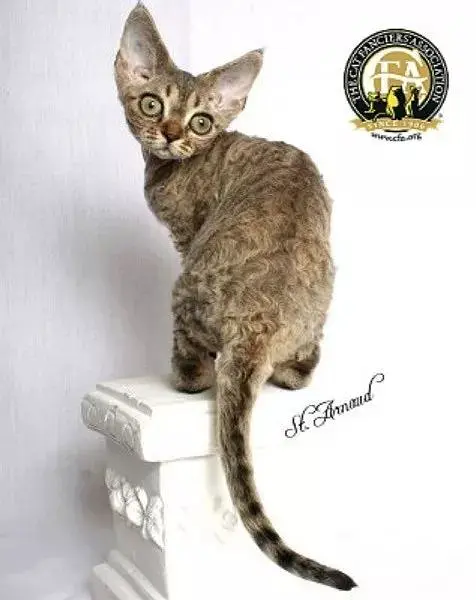
History:
The German curly cat comes from the UK. In the 1960s, a tortoiseshell and white striped stray cat was adopted by Beryl Cox. She gave birth to a litter of kittens, including a male kitten with dark brown curls. Miss Cox left the cat and named it Karlee. Miss Cox thought Karlee was a Cornish curly cat, so she wrote to Brian Sterling-Webb, a cat breeding expert. However, the test results show that Karlee's curl gene is completely different from that of the Konigs curl cat. There are also many differences in gene expression. For example, the whiskers of the Cornish cat are curved, while the whiskers of Kirlee are short and thick; Karlee's curls are very dense, but not as wavy as the Cornish cat. Breeders then began to cultivate this new breed and named it the German Curl cat. The ancestor of all German curly cats is Karlee.
Physiological characteristics:
The German Curl cat is of medium size and weighs about 3-4 kg. The shape of their short curly hair varies from cat to cat. Some cats have thick fur like messy mops, some have less fur like goatskin, and some even have bald patches. The beard and eyelashes are also short and wrinkled. Their hair is not as thermally insulating as other breeds, so it feels very warm when held.
The ears and eyes of the German curly cat are very large, and they look like an elf, with a long and thin neck and a very strange head shape. It is said that ET was designed based on the German curly cat.
Because the whiskers of German curly cats are often broken, it is difficult for them to accurately determine the position and direction in the dark. In addition, they have almost only a layer of undercoat, no protective hair, and are difficult to keep warm, so they are only suitable for domestic use.
Character characteristics:
The German curly cat has a strange appearance and personality. They are smart, mischievous, and very active. They love to play and are good at jumping. They may appear anywhere you can't think of. They are very clingy and love to stay on people's legs. They are relatively quiet and can live in harmony with children and other pets.
10. Abyssinian cat

History:
The Abyssinian is one of the oldest domestic cat breeds. Legend has it that Abyssinian cats are descendants of ancient Egyptian god cats because they are very similar to cats in ancient Egyptian murals and crafts. But recent studies have shown that the ancestors of Abyssinian cats may have come to Bengal.
Physiological characteristics:
Abyssinian cats are short-haired cats, medium-sized, and muscular. Male cats can weigh up to 3.5-4.5 kg, and female cats can weigh up to 2.7-3.2 kg. The body is slender, with slender legs.
The Abyssinian’s ears are large and arched forward, sometimes forming a bunch like an African wild cat. The head is small and slightly wedge-shaped. Their large eyes are almond-shaped and look like a circle of black eyeliner. The muzzle is naturally embedded in the overall face contour, neither protruding nor retracted. So they look very elegant and noble.
The fur of the Abyssinian cat has a gradient color similar to the agouti, and each hair has 4-6 shades, which is called "agouti pattern" (for more description of the agouti pattern, please see " A complete list of cat hair colors"). The hair is very elastic and clings to the body. When the hair is stroked backwards, it will immediately return to its original place. There is a dark line on the back that reaches the tail.
The coat colors are red, chocolate, laurel, blue, light purple, and light fawn. There is also a silver variety, the hair near the skin is icy and the color changes to the tip of the hair.
Character characteristics:
Abyssinian cats are loyal, friendly, very intelligent, and enjoy interacting with their owners and their surroundings. They will explore all the places, but rarely overturn things. They have a strong interest in surrounding things. It's not a cat who likes to stay on people's lap, mainly because they are always energetic and curious. Abyssinian cats sometimes lie on the owner's lap, but instantly become as energetic as a child, posing in weird poses. They love the company of humans of all ages, love to play, and hope to bring their masters into their activities. Don't like being alone.
🌟42 kinds of purebred cat behavioral characteristics and character descriptions recognized by CFA🌟
- Breeds of cats
- Behavior characteristics and character description
- Key reminder
Abyssinian cat
Abyssinian cats are loyal, friendly, very intelligent, and enjoy interacting with their owners and their surroundings. They will explore all the places, but rarely overturn things. They have a strong interest in surrounding things. It's not a cat who likes to stay on people's lap, mainly because they are always energetic and curious. Abyssinian cats sometimes lie on the owner's lap, but instantly become as energetic as a child, posing in weird poses, and full of stubbornness. They love the company of humans of all ages, love to play, and hope to bring their masters into their activities. They don't like to live in a group of cats.
-Almost no need to comb the hair
-Love social interaction
-Lively and love to play
American Bobtail
American Bobtail cats are a perfect family pet. They have deep feelings for the whole family, not just for one person. They can live in harmony with children and other pets. Compared to living alone, they prefer to be with their families. Their love for their masters moisturizes things silently, rather than sticking to their masters all day long. They are often moderately active and will neither become lazy "couch potatoes" nor perpetual motion machines. It is easier for them to learn to walk under the lead of a cat walking rope and play ball chasing games.
-Groom your hair 2-3 times a week
-Love social interaction
-Lively and love to play
American Anti-eared Cat
American anti-ear cats are curious, energetic, and love company. They have ears that curl backward and toward the middle of the head. They are extremely human-centric and will slap you to get your attention and want you to play with them. They want to be with you all the time, whether it's sleeping at night or watching TV while lying on your lap. They love young children and can quickly adapt to other pets and new environments. They are quiet, and when they want something, they use gentle vibrato and cooing to get attention. Their personality like little milk cats also earned them the nickname "Peter Pan among cats".
-Almost no need to comb the hair
-Love social interaction
-Quiet
American Shorthair
American shorthair cats are kind and easy-going by nature and are very popular in the family. They tolerate small children. They are sometimes calm and calm, but they are still very playful even in old age. Female cats tend to be more likely than male cats, and male cats tend to be more easy-going. Generally speaking, they are very smart and very interested in surrounding things. Many American shorthair cats hunt for insects that have aggravated invasiveness. They also like to look at the birds and other living creatures outside from the windowsill. They love people's company, but they also need their own independent space. Many of them prefer to lie on people's laps, and some prefer to lie near people.
-Groom your hair 2-3 times a week
-Quiet
-Love to be alone
American Wirehair
Similar to American shorthair cats.
-Almost no need to comb the hair
-Don't like to bark
-Lively and love to play
Balinese
Balinese cats have very cute characters and are closely related to their families. They will become your best friends and follow you to do everything. Very social. They like to bark and will actively remind you to pay attention to the information you may have missed. They need attention very much and like to play pranks, so they can't stay alone for long periods of time. They can live in harmony with children and other pets.
The ancestor of the Bali cat is the Siamese cat, which is a long-haired variant of the Siamese cat, but it is not as babble and needs attention as the Siamese cat.
-Groom your hair 2-3 times a week
-Love to call
-Love social interaction
-Lively and love to play
Balinese - Javanese Division
Similar to the Bali cat.
Birman
Berman cats are very suitable pets for families. They can coexist peacefully in a single cat family or a multi-cat family. They are patient, good-tempered, tolerant, and introverted. They are relatively quiet pets with soft bark.
-Daily hair combing
-Quiet
-Love to be alone
Bombay cat
Bombay cats have both the easy-going nature of American shorthair cats and the curiosity and friendliness of Maine Coon cats. They love people's company and are more friendly to strangers. Maine Coon cats are very clingy and like to play. They like the whole family and can get along well with children. They become depressed if they are alone for a long time.
-Almost no need to comb the hair
-Love social interaction
-Lively and love to play
British shorthair cat
British shorthair cats are very common. They are friendly and loving. They are not particularly clingy, but they also enjoy people's care and love. They are loyal, but don't like to be in people's laps. They prefer to squeeze next to you on the sofa. They are relatively quiet, do not run and jump around, and tolerate children and dogs. They don't like being hugged.
-Groom your hair 2-3 times a week
-Taciturn
-Quiet
-Love to be alone
Burmese cat
Burmese cats are naturally sweet, relatives, and like to lie on people's laps. They love to play and easily tolerate being put on clothes and being hugged and walking around. They love to bark and need company very much. They are lonely when no one is at home. If people are busy with work and stay away from home for a long time, consider raising two Maine to accompany each other.
Burmese cats require a lot of exercises, so they are not suitable to be kept only at home.
-Almost no need to comb the hair
-Love to call
-Love social interaction
-Lively and love to play
Chartreux
Chartres like to stay on the ground and don't like to be held for a long time. They like to play, they are smart, relatively quiet, peaceful, easy to be domesticated, and close to people. They like to climb and are also very good hunters.
Chartres is very clever. They are native to France and mean "dog cat" in French. Their fur is very thick, so they can easily adapt to low-temperature environments.
-Groom your hair 2-3 times a week
-Taciturn
-Quiet
Colorpoint Shorthair
The key color shorthair cats are friendly, loyal, sensitive to the owner's emotions, and love to stay on people's laps. They love to bark and sometimes are more stubborn.
-Groom your hair 2-3 times a week
-Love to call
-Love social interaction
Cornish Rex
The Cornish curly cat has a very outstanding enthusiasm. Strong sociability, like the feeling of being noticed by everyone. They are very smart, well-coordinated, and they can make all kinds of funny movements, and they will retain their naughty nature when they were young. They are energetic and playful and can play alone for hours on their own. They are very clingy, they like to stay on people's laps, and they can coexist peacefully with other animals and children.
-Almost no need to comb the hair
-Love to call
-Love social interaction
-Lively and love to play
Devon Rex
The German curly cat has a strange appearance and personality. They are smart, mischievous, and very active. They love to play and are good at jumping. They may appear anywhere you can't think of. They are very clingy and love to stay on people's legs. They are relatively quiet and can live in harmony with children and other pets.
-Almost no need to comb the hair
-Love to call
-Love social interaction
-Lively and love to play
Egyptian Mau
Egyptian cats are sometimes considered alienated and shy. But for the owner, they can form a special emotional bond. They are very loyal. Egyptian cats are very keen on smell, hearing, and vision. They are shy and sensitive and are easily disturbed by sudden noises.
The Egyptian cat is one of the most flexible and agile breeds. Like to be outdoors.
-Almost no need to comb the hair
-Quiet
European Burmese
European Maine Coon cats are very smart, friendly, and extremely loyal. They are friendly to people and like to stay on their laps. Loves to play, keep quiet, and can live peacefully with other pets.
-Almost no need to comb the hair
-Love social interaction
-Quiet
Exotic
Exotic shorthair cats are friendly, docile, and have quiet qualities similar to Persian cats. They will get your attention with eyes that you can't refuse. Their shorthair ancestors made them love to play. They have a very soft voice and can live in harmony with children and other pets. They are afraid of unfamiliar people, and they have a low degree of caring for humans.
-Groom your hair 2-3 times a week
-Scrub tears daily
-Quiet
-Love to be alone
Havana Brown
Havana cats are curious, playful, and loved ones. They require a lot of attention and will give back love. They like to explore and sometimes knock things over.
-Almost no need to comb the hair
-Love social interaction
-Lively and love to play
-Quiet
Japanese Bobtail
Japanese bobcats are active and intelligent, they like the feeling of companionship, and they are friendly and outgoing. They love to play and don't like to stay on people's laps for long periods of time. They are loyal to the family and can adapt to children and other pets.
-Almost no need to comb the hair
-Love social interaction
-Lively and love to play
-Love to call
Korat
Korat cats are energetic, intelligent, and friendly. They prefer to get along with other Korat cats. They may not be able to accept other cats and are relatively strong. They have a very keen sense of hearing, sight, and smell. They move very softly and do not like noise.
They have green eyes. In Thailand, the hometown of Korat cats, they are regarded as bringing luck.
-Almost no need to comb the hair
-Love social interaction
-Lively and love to play
La Perm
Rabon cats are smart and curious. They are naughty and funny. They are active, outgoing, and like to follow people to do things. Their friendly nature means that they can get along well with children and other pets.
-Groom your hair 2-3 times a week
-Don't like to bark
-Love social interaction
-Lively and love to play
Maine Coon Cat
Although Maine Coon cats are friendly to humans, they are not very clingy. They are more like an equal partner for people. They are easy-going, relaxed, not barking, and can get along with children, dogs, and other cats.
Maine Coon cats are very tall and strong, with a body length of more than 100 cm (nose to tip of tail) and a weight of 10 kg. Designated as the state cat of Maine, USA.
-Groom your hair 2-3 times a week
-More like calling
-Love to be alone
Manx
Isle of Man cats love to play, and their strong hind legs make them excellent jumpers. They are very smart and can learn very quickly. They are quieter and quieter. They can form a strong bond with the family, and with proper introduction, they can coexist peacefully with children and other pets.
-Groom your hair 2-3 times a week
-Quiet
-Love to be alone
Norwegian Forest Cat
The Norwegian Forest Cats are relatively independent, and they dominate their interactions with people. Moderately active, uncomfortable, sweet.
It is a large cat. The weight of male cats can reach nearly 10 kilograms and the body length (nose to tip of tail) can reach 1.3 meters.
-Groom your hair 2-3 times a week
-Don't like to bark
-Love to be alone
Ocicat
Oasi cats look very "wild", but they are definitely family pets. They are confident, outgoing, and not afraid of strangers. They are smart, energetic, and possessive of toys.
-Almost no need to comb the hair
-Love to call
-Love social interaction
-Lively and love to play
Orient
Oriental shorthair cats are lively, intelligent, social, and playful. They still maintain a playful nature when they were young. They are more called. Some Oriental Shorthair cats only have an emotional connection with one person and don't like strangers or even other members of the family.
-Almost no need to comb the hair
-Love to call
-Love social interaction
-Lively and love to play
Persian
Persian cats are sweet and gentle. They like a stable environment and are treated with gentleness. They don't like to move, play, and are quiet. They mainly rely on their big eyes to communicate. They don't need too much attention from people, can be alone at home, and are less courageous.
-Daily hair combing
-Scrub tears daily
-Quiet
-Love to be alone
RagaMuffin
Similar to puppet cat
Similar to puppet cat
Ragdoll
The puppet cat is relaxed and happy, just like a child's doll. They are friendly, quiet, and seem relatively lazy. They are not very active, and they don't like to bark too much. Ragdolls are known for their endurance. They can bear to put on clothes and be held and walk around without resisting. Because of their friendliness and intelligence, they are often compared with dogs.
-Groom your hair 2-3 times a week
-Taciturn
-Quiet
-Love to be alone
Russian Blue
Be alert to unfamiliar people and get along well with children and other pets. Russian blue cats are elegant and aristocratic, and they will make careful investigations before they act. They will observe people and see if they are worthy of their company. Sometimes people think that the Russian Blue Cat is unkind or shy. They are smart and have strong learning abilities. They are very quiet and are more comfortable with being alone. Hardly shed hair.
-Almost no need to comb the hair
-Taciturn
-Quiet
-Love to be alone
Scottish Fold
The Scottish Fold is smart, curious, and loyal to the family. They are bold and like to follow people around. Many Scottish fold cats stand up and observe like groundhogs. They get along well with children.
-Groom your hair 2-3 times a week
-Taciturn
-Quiet
-Love to be alone
Selkirk Rex
The Selkirk cat is friendly, patient, good-tempered, and quiet. Their British shorthair ancestors gave them a lazy personality, their Persian ancestors added cuteness to them, and their exotic shorthair ancestors brought some playfulness to them.
-Groom your hair 2-3 times a week
-Taciturn
-Quiet
-Love to be alone
Siamese
Siamese cats are very good pets for owners who need a lot of interaction and activities. They get along well with other pets and children. They are friendly, loyal, sticky, and need people's attention very much. They like to play and bark very much.
-Almost no need to comb the hair
-Love to call
-Love social interaction
-Lively and love to play
Siberian
Siberian cats use their high intelligence to solve all problems, such as opening doors, obtaining cat food, finding hidden toys, and so on. They are powerful and sensitive, can jump high and long distances, and are very good at avoiding obstacles. They love to play.
Siberian cats are very thick and waterproof and prefer to go out and walk around.
-Groom your hair 2-3 times a week
-Lively and love to play
-Love to be alone
Somali
Similar to Abyssinian cats.
-Groom your hair 2-3 times a week
-Quiet
-Love social interaction
-Lively and love to play
Singapura
The sweet and small Singaporean cat is curious and outgoing. They are smart and like to stand high and look down on all activities. They are docile, have a soft voice, and can coexist peacefully with other cats.
Singaporean cats are petite and generally weigh no more than 3 kg.
-Almost no need to comb the hair
-Quiet
-Love to be alone
Sphynx
Sphinx cats are smart and very friendly. They often fall asleep in the blanket with their owner. They like to stay on people's laps. Because there is no hair, Sphinx cats are prone to catch colds, so they will stay in warm places, such as computer monitors, sunlit windows, or televisions. They are loyal and very friendly to their owners.
-Love social interaction
-Lively and love to play
Tonkinese
Tonkin cats are warm, friendly, and love to stay on people's laps. They are smart and have a good memory, so training them can be very rewarding. They love to play, socialize, are strong-willed, and bark.
-Almost no need to comb the hair
-Love to call
-Love social interaction
-Lively and love to play
Turkish Angora
Turkish Angora cats look slender and elegant, but they have strong muscles and are very athletic. They are very smart and can learn to open cabinets, open doors, etc.
The Turkish Angora is the oldest long-haired cat in the world.
-Groom your hair 2-3 times a week
-Love to call
-Love social interaction
-Lively and love to play
Turkish Van
The Turkish Van Cat is loyal, friendly, intelligent, and lively. They have strong hind legs, making them great jumpers and climbers. They love to play and run around. They are not the kind of pets that like to be held or stay upstairs for a long time.
Turkish Vanuatu cats like to play in the water and use their paws to catch objects swimming in the water. This is related to the fact that their ancestor grew up in the Van Lake area of Turkey.
-Groom your hair 2-3 times a week
-Don't like to bark
-Lively and love to play
Data extracted from:
1)www.tica.org,
2)https://icatcare.org/advice/cat-breeds,
3)http://www.cfa.org/Breeds.aspx
The above description can only be used as a simple reference.
Every cat has its own different personalities and hobbies,
There will also be behavioral changes based on the environment of acquired growth.
Reference materials:
(1)The Cat Fanciers’ Association. https://www.cfa.org.
(2)The International CatAssociation. https://www.tica.org.
(3) International Cat Care. https://icatcare.org.
(4) (English) Bruce Fogel, "DK Cat Encyclopedia", translated by Cao Zhongcheng, Shanghai Culture Publishing House, August 2018.
(5) (German) Gerd Ludwig, "The Complete Book of Cats", translated by Huang Yuli, Beijing United Publishing Company, January 2017.
Unauthorized transfer of Banpet Paradise products is prohibited
